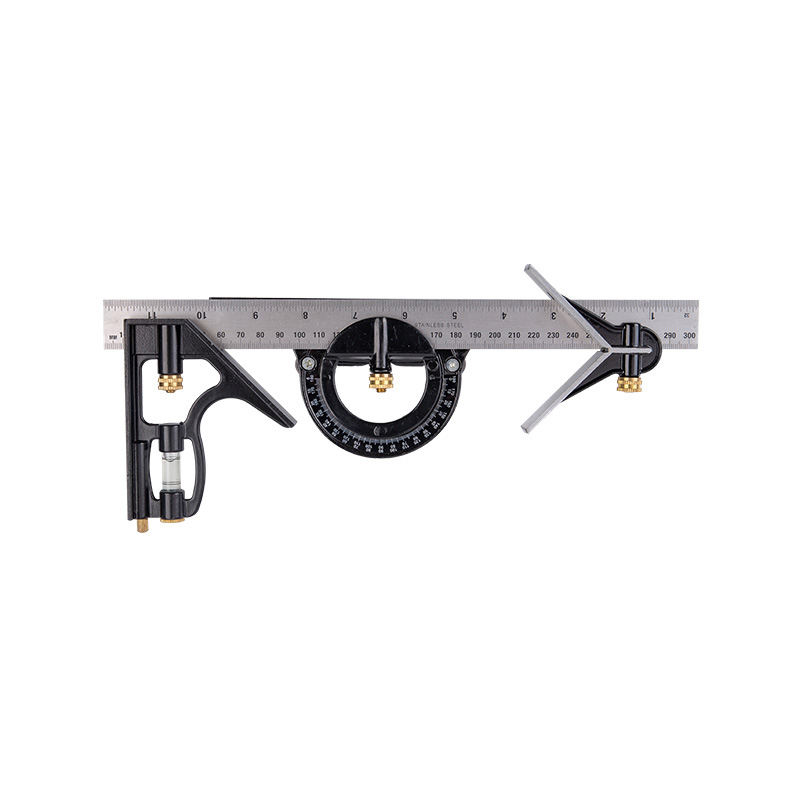To check the squareness of a workpiece or assembly using a combination square, follow these steps:
Prepare the Workpiece: Before beginning any measurement process, it's crucial to establish a suitable working environment. Ensure the workpiece is positioned on a flat, stable, and level surface, such as a dedicated workbench or assembly table. If the workpiece is excessively large or unwieldy, consider using additional support or clamping mechanisms to secure it firmly in place. Any deviations in the surface level could introduce inaccuracies into your measurements, leading to compromised results.
Select the Blade: The selection of the appropriate blade or ruler on your combination square is paramount to obtaining precise measurements. Consider factors such as the length of the blade, the clarity of scale markings, and the specific requirements of your project. Longer blades may provide increased stability and accuracy over extended distances, while finer scale graduations enable more refined measurements, particularly for intricate or detailed work.
Place the Blade: With meticulous care, position the blade of the combination square against one edge of the workpiece. Ensure that the blade makes full and consistent contact along the entire length of the edge, minimizing any potential gaps or irregularities. Any deviations in the blade's alignment or inconsistencies in contact could compromise the accuracy of your measurements, necessitating meticulous attention to detail during this critical step.
Adjust the Square: If the initial positioning of the blade does not align precisely with the edge of the workpiece, utilize the adjustable features of the combination square to make minute adjustments. Depending on the specific model, this may involve fine-tuning mechanisms such as thumb screws, locking levers, or friction adjustments. Exercise caution and patience during this process, ensuring that any adjustments are made gradually and precisely to achieve the desired alignment without overcompensation or misalignment.
Check for Square: With the blade securely positioned against the edge of the workpiece, meticulously scrutinize the alignment of the opposite side of the blade with the adjacent edge. Adopt a systematic approach, visually inspecting the entire length of the blade to identify any discrepancies or inconsistencies in alignment. Ensure that the blade maintains consistent contact with the workpiece edge throughout the inspection process, verifying squareness with unwavering attention to detail.
Verify Squareness: To comprehensively validate the squareness of the workpiece, conduct multiple checks at various points along its length or width. Methodically move the combination square to different locations, repeating the measurement process to assess the consistency of alignment across the entire workpiece surface. Pay particular attention to any areas that exhibit deviations or irregularities, as these may require additional scrutiny or corrective action to achieve optimal squareness.
Adjust if Needed: Upon identifying any discrepancies in squareness, carefully analyze the nature and extent of the misalignment to determine the appropriate course of action. Depending on the severity of the deviation, corrective measures may range from minor adjustments to more substantial modifications of the workpiece geometry. Exercise caution and precision when implementing adjustments, ensuring that any modifications are executed with meticulous attention to detail to achieve the desired level of squareness without compromising the structural integrity or dimensional accuracy of the workpiece.
Recheck: Following the implementation of corrective measures, it's imperative to conduct thorough reassessments of the workpiece's squareness to validate the effectiveness of the adjustments. Repeat the measurement process, conducting multiple checks at various points along the workpiece surface to confirm the attainment of desired squareness. Exercise diligence and vigilance during this final verification stage, leaving no stone unturned in the pursuit of precision and accuracy.
Heavy duty professional combination square


